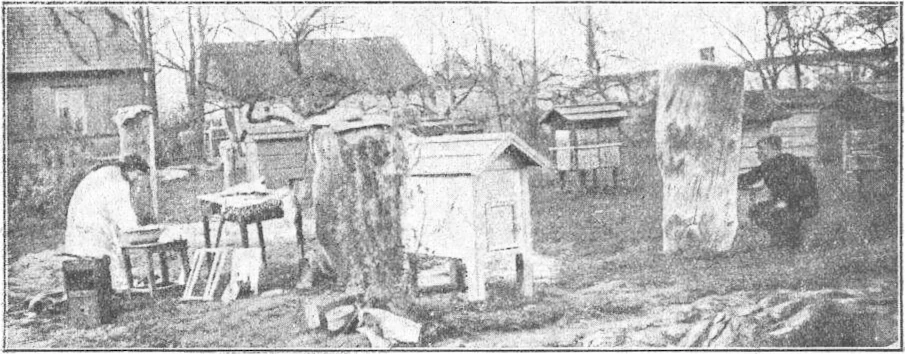
Discover the Warsaw Hive
Currently (Jan 2024) there is little information available online in English about the Warsaw beehive. This website has been primarily setup to share English translations of public domain books that describe the Warsaw hive or its related/similar hives. I've also translated some books by Georges de Layens as I was interested to see similarities with the use of straw matting insulation.
At the moment the translations are mostly the work of machine. I am working to improve the formatting, add back the pictures/diagrams and improve the quality of translation where I can. If I manage all that then they may be released as a PDF in the future. Be warned, some books haven't been checked yet for optical character recognition errors (numbers are particularly hard to spot), so always double check measurements against the original before making a cut! If you notice such an error then please let me know and I can correct it.
Enjoy!
Books
Tadeusz Ciborowski
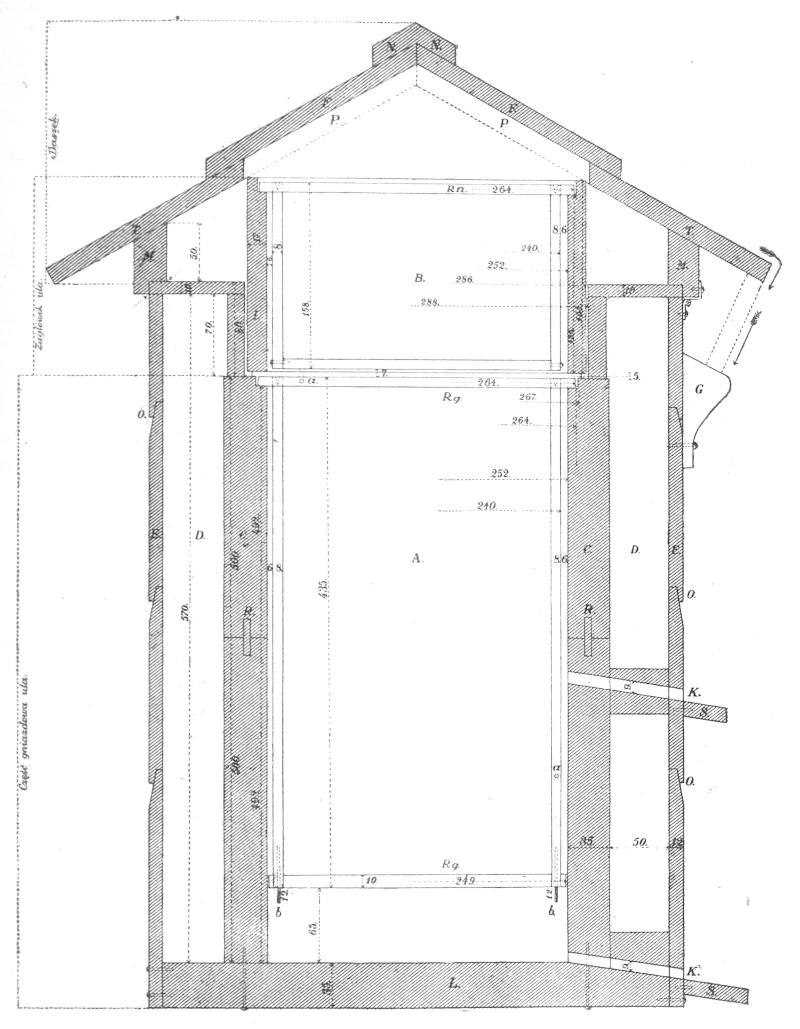
Warsaw hive, wooden and straw with equipment
↣ Translated from: Ul warszawski, drewniany i słomiany wraz z zaopatrzeniem 1937
How to breed bees to produce a lot of honey
↣ Translated from: Jak hodować pszczoły by dawały dużo miodu 1937
Work in the apiary
↣ Translated from: Praca w pasiece 1927
Bees or the science of bee life and nature
↣ Original: Pszczoły czyli Nauka o pszczelem życiu i naturze 1927
Stefan Blank-Weissberg
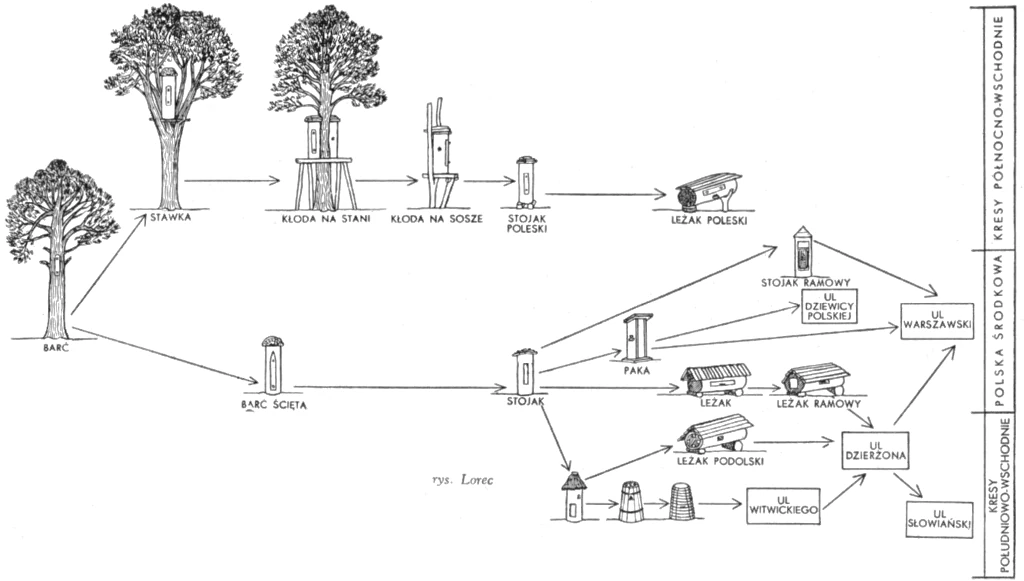
Bee trees and logs in Poland
↝ Translated from: Barcie i kłody w Polsce 1937
↝ also available at Wikisource (suitable for auto-translation)
↝ The glossary makes a useful Polish to English reference.
Teofil Ciesielski
Beekeeping, that is breeding bees for profit based on science and extensive experience. II. Management in the apiary
↠ Translated from: Bartnictwo czyli Hodowla pszczół dla zysku oparta na nauce i wielostronnem doświadczeniu. II. Gospodarka w pasiece 1901
↠ Numbers need checking as there maybe OCR errors!
↠ The hive Ciesielski designed went by various names: the society hive, the slavic hive (ul słowiański) and finally the Ciesielski hive.
Jan Dzierżon
Dzierzon's rational beekeeping 1882
⇉ As we see from the above diagram, the Warsaw and Ciesielski hives (as well as the Berlepsch, Dathe, etc.) evolved from the Dzierżon hive (ul Dzierżona).
Kazimierz Lewicki
Beekeeping: a collection of information about the life and nature of bees applied to the needs of beekeepers and a guide to rationally running an apiary in Warsaw frame hives and bottomless beehives with extensions
W. Dubeltowicz
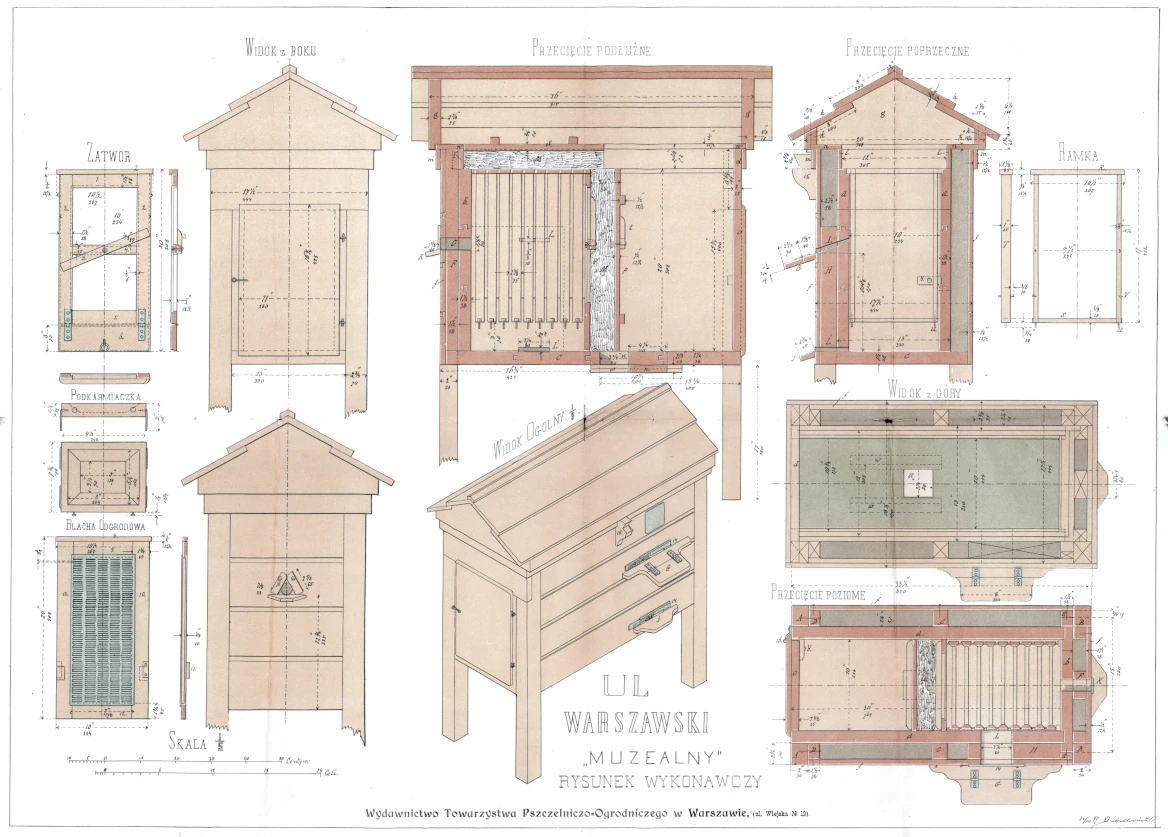
Warsaw hive ‘Muzealny’, detailed drawing
⇝ Original: Ul warszawski "Muzealny", rysunek wykonawczy 1898
Stanisław Brzósko
Note: I think the Warmia-Mazury Digital Library may have the date of Brzósko’s death wrong, and consequently, the works could still be copyrighted in the UK/EU.
Practical beekeeping: description of management in Warsaw hives and beehives with supers
⇸ Original: Praktyczne pszczelnictwo : opis gospodarki w ulach warszawskich i kószkach z nadstawkami 1922
Management in top hives
⇸ Original: Gospodarka w ulach nadstawkowych 1923
⇸ Also available at the HathiTrust (US only)
Aleksander Sokolik
The Warsaw frame hive and its popular economy
⇀ Original: Ul ramowy warszawski i gospodarka w nim popularnie 1903
Beekeeping farm in a frame hive in Warsaw: (elementary)
⇀ Original: Gospodarstwo pszczolnicze w ulu ramowym warszawskim : (elementarne) 1903
Jan Leciejewski
Size and form of frames
↪ Translated from: Wielkość l forma ramek 1919
Gustav Dathe
Beekeeping textbook; a guide that preferably follows a practical direction, as a club work for the Hessian beekeepers' associations
Beekeeping textbook: a guide that is primarily practical
⇁ Original: Lehrbuch der Bienenzucht :ein vorzugsweise die praktische Richtung verfolgender Leitfaden 1892
Georges de Layens
⇢ Translations of Georges de Layens' books can be found on the Layens page.
Alfred Neighbor
The apiary; or, bees, bee-hives, and bee culture 1878
⤐ Neighbor describes hives made out of straw in the UK, such as the Woodbury Frame Hive.
Charles Dadant/Camille Pierre Dadant
Dadant system of beekeeping 1920
Langstroth on the hive & honey-bee 1919
⇻ Note the diagram and description of the Berlepsch hive (page 144).
⇻ The Dadants enthuse about straw mats in their books. An engraving of a "Frame to make straw mats" is on page 173.
Gilbert Doolittle
Descritpion of the hive I use and my management of bees 1900
⤍Doolittle describes his use of the Gallup hive. The Gallup frame is virtually square (inside measure 273x273mm), the same outside length as the depth (height) of a UK Dadant deep or Langstroth jumbo frame (286mm).
Expanded Warsaw Hive
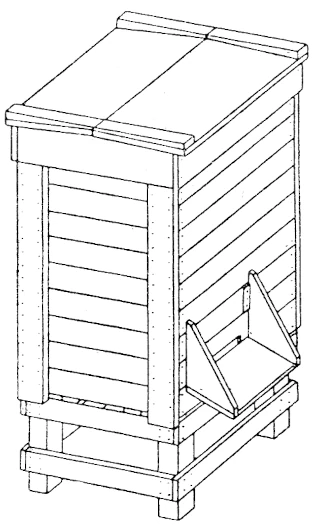
A variant of the Warsaw hive that uses frames with Dadant-Blatt dimensions, but rotated 90 degrees. The Ukranian hive uses the same frame. The hive name could be translated as Widened Warsaw Hive, however this is a little confusing because the normal Warsaw frame has been lengthened not widened according to the beekeeping convention. Although the hive has larger brood frames, they number between 11 and 16 so is not necessarily a larger volume hive.
I found the following plans on the Pszczoły - Życie w Rytmie Natury (‘Bees - Life in the Rhythm of Nature’) blog. They originally came from a 1960s beekeeping magazine. I have since found a more complete set of plans on the pszczelarstwomojapasja blog.
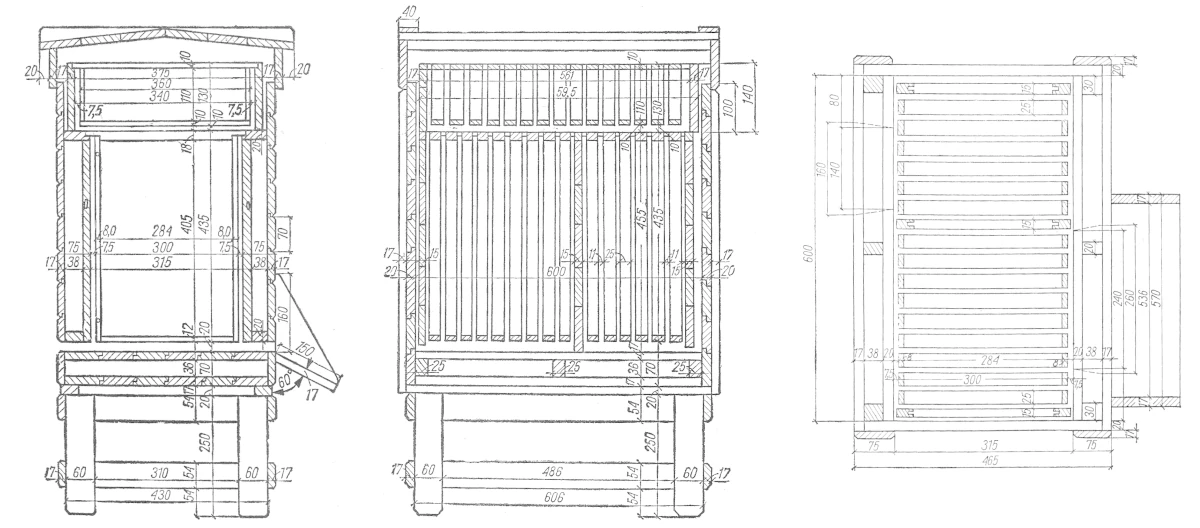
The super frames match the half frames from the Wielkopolska (‘Greater Poland’) hive. In the UK a super frame based on the British Standard (National/Smith) could be used instead.
Useful Websites
ApisWiki
Polish beekeeping wiki. Google Translate (other translation services are available) is your friend here.
- Hives
- Frames
ImkerPedia
Dutch wiki describing many European hives. Here is the Google Translate version.
Dave Cushman
Including: Beekeeping by war refugees (a Ciesielski hive?)
David Heaf's beekeeping pages
It was David's Modified Einraumbeute ('golden hive') page that put me on the trail of the Warsaw Hive and Polish beekeeping.
Beespoke
A really interesting site, particularly for those interested in working with skeps/straw/grasses.
Lyson
Lyson in Poland sell a number of Warsaw products. Note, their frames appear to have a top bar length of 275mm (expanded 335mm).
Mellifera e. V.
The Expanded Warsaw/Ukranian hives without supers may draw comparisons with the Einraumbeute (‘one-room hive’), although the frame dimensions are slightly different.